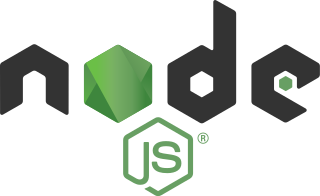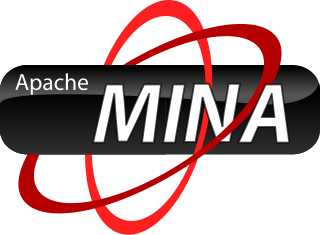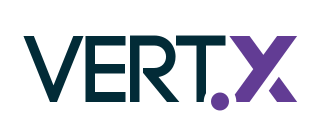JUnit is a test automation framework for the Java programming language. JUnit is often used for unit testing, and is one of the xUnit frameworks.
In software engineering, the terms frontend and backend refer to the separation of concerns between the presentation layer (frontend), and the data access layer (backend) of a piece of software, or the physical infrastructure or hardware. In the client–server model, the client is usually considered the frontend and the server is usually considered the backend, even when some presentation work is actually done on the server itself.
Web development is the work involved in developing a website for the Internet or an intranet. Web development can range from developing a simple single static page of plain text to complex web applications, electronic businesses, and social network services. A more comprehensive list of tasks to which Web development commonly refers, may include Web engineering, Web design, Web content development, client liaison, client-side/server-side scripting, Web server and network security configuration, and e-commerce development.
TestNG is a testing framework for the Java programming language created by Cedric_Beust and inspired by JUnit and NUnit. The design goal of TestNG is to cover a wider range of test categories: unit, functional, end-to-end, integration, etc., with more powerful and easy-to-use functionalities.
The Spring Framework is an application framework and inversion of control container for the Java platform. The framework's core features can be used by any Java application, but there are extensions for building web applications on top of the Java EE platform. The framework does not impose any specific programming model.. The framework has become popular in the Java community as an addition to the Enterprise JavaBeans (EJB) model. The Spring Framework is free and open source software.

Aptana, Inc. is a company that makes web application development tools for use with a variety of programming languages. Aptana's main products include Aptana Studio, Aptana Cloud and Aptana Jaxer.
Apache Gump is an open source continuous integration system, which aims to build and test all the open source Java projects, every night. Its aim is to make sure that all the projects are compatible, at both the API level and in terms of functionality matching specifications. It is hosted at gump.apache.org, and runs every night on the official Sun JVM.

WaveMaker is a Java-based low-code development platform designed for building software applications and platforms. The company, WaveMaker Inc., is based in Mountain View, California. The platform is intended to assist enterprises in speeding up their application development and IT modernization initiatives through low-code capabilities. Additionally, for independent software vendors (ISVs), WaveMaker serves as a customizable low-code component that integrates into their products.

Spring Roo is an open-source software tool that uses convention-over-configuration principles to provide rapid application development of Java-based enterprise software. The resulting applications use common Java technologies such as Spring Framework, Java Persistence API, Thymeleaf, Apache Maven and AspectJ. Spring Roo is a member of the Spring portfolio of projects.

Node.js is a cross-platform, open-source JavaScript runtime environment that can run on Windows, Linux, Unix, macOS, and more. Node.js runs on the V8 JavaScript engine, and executes JavaScript code outside a web browser.

Play Framework is an open-source web application framework which follows the model–view–controller (MVC) architectural pattern. It is written in Scala and usable from other programming languages that are compiled to JVM bytecode, e.g. Java. It aims to optimize developer productivity by using convention over configuration, hot code reloading and display of errors in the browser.

Google Plugin for Eclipse (GPE) was a set of development tools that enabled Java developers to design, build, optimize, and deploy cloud computing applications. developers in creating complex user interfaces, generating Ajax code using the GWT Web Toolkit, and deploying applications to Google App Engine. GPE installed into the Eclipse integrated development environment (IDE) using the extensible plugin system. GPE was available under the Eclipse Public License 1.0.

Jenkins is an open source automation server. It helps automate the parts of software development related to building, testing, and deploying, facilitating continuous integration, and continuous delivery. It is a server-based system that runs in servlet containers such as Apache Tomcat. It supports version control tools, including AccuRev, CVS, Subversion, Git, Mercurial, Perforce, ClearCase, and RTC, and can execute Apache Ant, Apache Maven, and sbt based projects as well as arbitrary shell scripts and Windows batch commands.
Netty is a non-blocking I/O client-server framework for the development of Java network applications such as protocol servers and clients. The asynchronous event-driven network application framework and tools are used to simplify network programming such as TCP and UDP socket servers. Netty includes an implementation of the reactor pattern of programming. Originally developed by JBoss, Netty is now developed and maintained by the Netty Project Community.

Apache MINA is an open source Java network application framework. MINA can be used to create scalable, high performance network applications. MINA provides unified APIs for various transports like TCP, UDP, serial communication. It also makes it easy to make an implementation of custom transport type. MINA provides both high-level and low-level network APIs.

Eclipse Vert.x is a polyglot event-driven application framework that runs on the Java Virtual Machine.

Gatling is a load- and performance-testing framework based on Scala, Akka and Netty. The first stable release was published on January 13, 2012. In 2015, Gatling's founder, Stéphane Landelle, created a company, dedicated to the development of the open-source project. According to Gatling Corp's official website, Gatling was downloaded more than 20,000,000 times (2024). In June 2016, Gatling officially presented Gatling FrontLine, Gatling's Enterprise Version with additional features.
The tools listed here support emulating or simulating APIs and software systems. They are also called API mocking tools, service virtualization tools, over the wire test doubles and tools for stubbing and mocking HTTP(S) and other protocols. They enable component testing in isolation.









